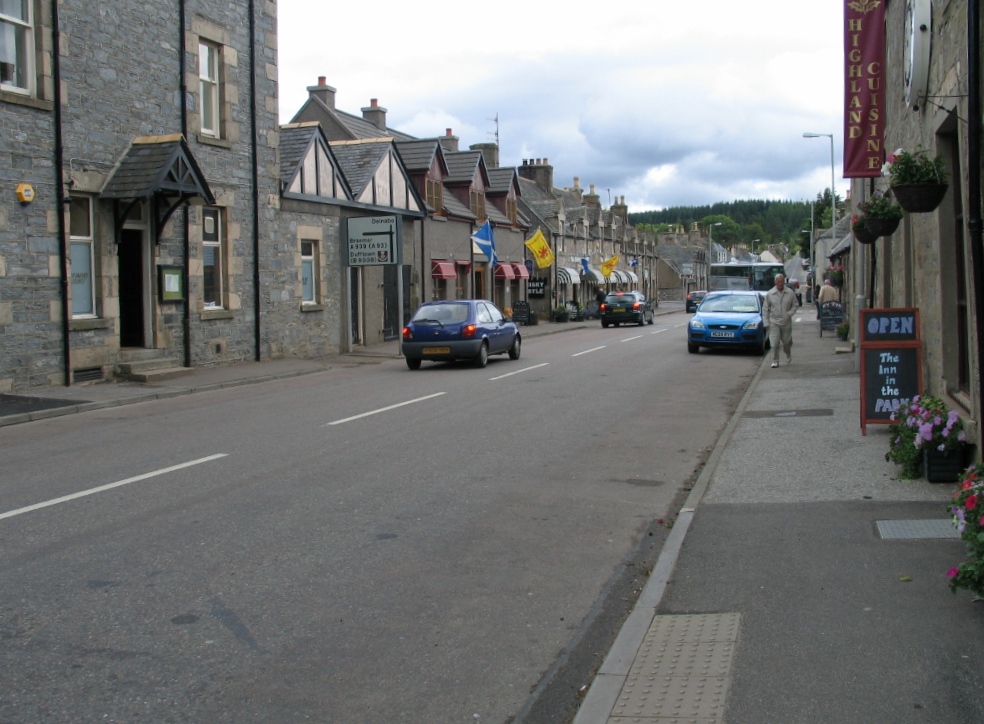Campdalemore Wood
Wood, Forest in Banffshire
Scotland
Campdalemore Wood

Campdalemore Wood is a picturesque forest located in Banffshire, Scotland. Covering an area of approximately 200 acres, this woodland is known for its diverse flora and fauna, making it a popular destination for nature enthusiasts and hikers alike.
The wood is situated on the outskirts of the small village of Campdalemore, offering visitors a tranquil and serene environment. It is surrounded by rolling hills and stunning landscapes, adding to its natural beauty. The forest is easily accessible, with well-maintained paths and trails that guide visitors through its enchanting wilderness.
One of the key features of Campdalemore Wood is its rich biodiversity. The forest is home to a wide variety of plant species, including towering Scots pine trees, birch, oak, and rowan. This diverse range of vegetation provides a habitat for numerous animal species, such as red squirrels, badgers, and various bird species.
The wood offers a range of recreational activities for visitors to enjoy. Walking and hiking trails wind through the forest, allowing visitors to explore its hidden treasures. There are also designated picnic areas and viewpoints where visitors can relax and admire the stunning surroundings. Additionally, the wood has a designated camping area for those who wish to spend a night under the stars.
Campdalemore Wood is a true gem in the heart of Banffshire. Its natural beauty, diverse wildlife, and tranquil atmosphere make it an ideal destination for nature lovers and those seeking a peaceful retreat amidst the Scottish countryside.
If you have any feedback on the listing, please let us know in the comments section below.
Campdalemore Wood Images
Images are sourced within 2km of 57.262595/-3.3949743 or Grid Reference NJ1519. Thanks to Geograph Open Source API. All images are credited.

![Across a marshy plain towards Tomintoul Tomintoul is reputed to be the highest village in the Highlands [but considerably lower than the highest in the Southern Uplands] and occupies a relatively flat site between the Conglass Water, seen here in the foreground, and the River Avon on the far side of the village. The site is not only high, but exposed, with the snow streaked Cairngorms in the distance.](https://s0.geograph.org.uk/geophotos/07/17/55/7175584_42bdd42a.jpg)
Campdalemore Wood is located at Grid Ref: NJ1519 (Lat: 57.262595, Lng: -3.3949743)
Unitary Authority: Moray
Police Authority: North East
What 3 Words
///chipper.skippers.melts. Near Grantown-on-Spey, Highland
Nearby Locations
Related Wikis
Tomintoul
Tomintoul ( ; from Scottish Gaelic: Tom an t-Sabhail, meaning "Hillock of the Barn") is a village in the Moray council area of Scotland in the historic...
Glenlivet Estate
The Glenlivet Estate is located in Glenlivet, Scotland in the Cairngorms National Park. It measures 58,000 acres (230 km2) and is part of The Crown Estate...
Kirkmichael, Moray
Kirkmichael is a parish and hamlet in Moray, Scotland. Kirkmichael was historically part of Banffshire.The hamlet lies approximately 8 miles south of Ballindalloch...
Tomintoul distillery
Tomintoul distillery is a distillery in Kirkmichael, between Ballindalloch and Tomintoul in the Speyside region of Scotland, producing malt whisky for...
Nearby Amenities
Located within 500m of 57.262595,-3.3949743Have you been to Campdalemore Wood?
Leave your review of Campdalemore Wood below (or comments, questions and feedback).


















